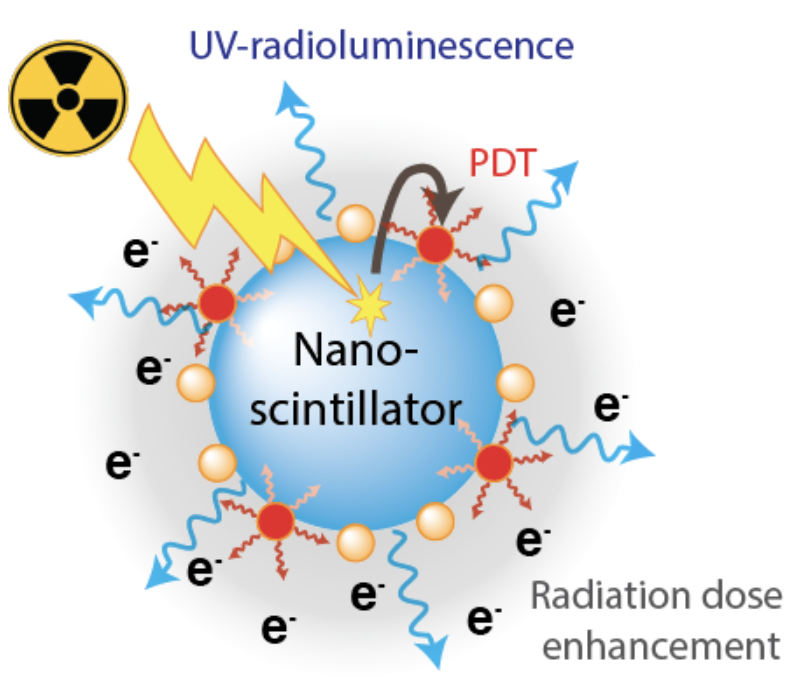- Share
- Share on Facebook
- Share on X
- Share on LinkedIn
Microbeam Radiation Therapy for cancer
![]()
For more than ten years, we are developing a novel form of radiotherapy, known as Microbeam Radiation Therapy (MRT), in which X-rays generated by a synchrotron light source are collimated into a set of quaisi-parallel microbeams (MBs) of a few tens of microns wide and separated by a few hundred microns. The microbeam irradiation geometry allows very high dose (hundreds of grays) deposition in the microbeam paths (peak dose) while tissue slices located in-between microbeams receive only 5-10% of the peak dose (valley dose).
Synchrotron microbeams for microsurgery
![]()
Brain diseases involving specific brain areas could benefit from the knowledge and expertise gained during the development of MRT for brain tumours. Among these pathologies, some forms of epilepsies clearly appear as first choice candidates.
Theranostic Nanoparticles for Radiotherapy and Imaging
![]()
The advantage of using theranostic nanoparticles is the ability to specifically target cancer cells, with the goal of both diagnostic revelation and enhancement of radiation dose deposition through X-ray or laser photo-activation. Here the energy-tunability and brilliance of synchrotron radiation has been instrumental in characterizing the biodistribution and uptake enhancement techniques within solid tumours.
Radiotherapeutic applications of nanoscintillators

Radiotherapeutic effects of nanoscintillators induced upon X-ray irradiation
Although scintillating materials were initially developed to detect ionizing radiations, nanoscintillators are gaining increasing interest for biomedical applications. Among those, nanomaterials can potentiate radiation therapy through several mechanisms including radiation dose-enhancement, X-ray induced photodynamic therapy and UV-C induced DNA damage. This program aims in investigating each of this contribution to elucidate the therapeutic mechanisms induced by nanoscintillators.
X-ray dose at the cell level in the presence of Copper ions
The understanding of energy deposition at the cellular level when X-rays interact with the cell in the presence of exogenous atoms of medium or high atomic numbers remains incomplete, particularly when relating the physical X-ray dose deposited to the biological effects as a function of X-ray photon energy.
- Share
- Share on Facebook
- Share on X
- Share on LinkedIn